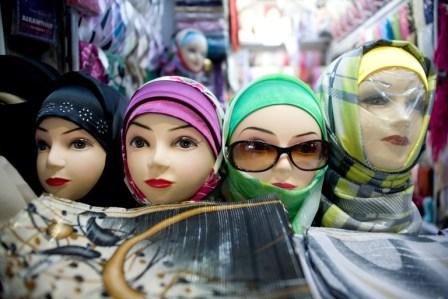Should cultural clothing rules be imposed in age of globalisation?
November 5th, 2009 By Paul Cochrane, in Beirut
By Paul Cochrane, in Beirut
In an age of mass migration on a global scale, is it possible for governments to impose on the public, particularly immigrants, what they can and cannot wear? Take the diktats on women's wear in France versus Iran. In the Islamic Republic, females above the age of nine are required to wear the hijab (veil) and cover up their bodies.
Conversely, in France the authorities have talked of banning the burka and succeeded several years ago in banning the hijab in public offices and schools. Turkey has also done the same in the name of secularism.
Many argue that the French and Turkish are right to do so, to stem the tide of Islamisation and, moreover, for women – in most cases girls – to have the individual choice as to whether they want to wear a hijab, not decided upon by parents or family. But that is where the problem lies – is it not denying people’s rights by not allowing women to wear the hijab, just as parents may take away that freedom to choose by imposing on their daughters to wear a hijab? There lies the crux of the issue, and there are no easy answers.
Personally, I think it is the right of people to wear whatever they want; it is their democratic right. I have seen both sides of the argument living in the Middle East, and plenty of paradoxes. It is not uncommon, particularly in Lebanon, to see veiled mothers whose daughters are bare headed, and vice versa. It is also a common sight to see young women in hijab but wearing skin tight tops and jeans, which goes against the whole notion of wearing a hijab in the first place and implies the hijab has become a fashion statement.
In Syria, where the ruling Baath party is secular, the number of women covering up has visibly risen over the past decade. Some put this down to growing religiousity, others put it down to a mix of religiosity and political statement against the secularist government. Without any surveys, it is impossible to know.
When leaving Iran, I witnessed women tearing off their hijabs once they left the Islamic Republic’s jurisdiction. Likewise I recall one night in Esfahan a French woman causing a scene when emerging from her hotel room to complain about noise dressed just in a negligee – the Iranian and Iraqi men sitting around the hotel’s courtyard were not impressed, tut-tutting under their breath. It was the epitome of where France stands on the issue of women’s clothing and where Iran (and elsewhere) does.
But to return to human rights. One could argue it is the right of a man as to whether he sports a beard or not, yet this is not the most common of practices in much of the business world – it is an unspoken rule and frowned upon not to be clean shaved in many offices. In times past in the USA, while a man might not have been fired for growing a beard, he might not have been hired. For a Muslim woman that wears the hijab it is not the same choice but a similar one in many respects – if she wants a job in the French public sector she will have to take off her hijab. But she could just as well find a job with a more open-minded employer.
But if history is anything to go by, social norms change over time. After all, Protestant women in Holland in the 18th century were similar to hijab-ed Muslim women today, totally covering their hair while Catholic women didn’t. Centuries later only nuns wear wimples – and governments make no issue of that – and it could very well be in the future that few women will wear the hijab.
– photo credit: George Haddad